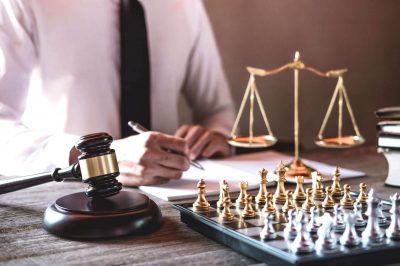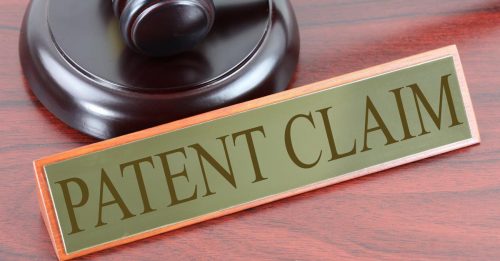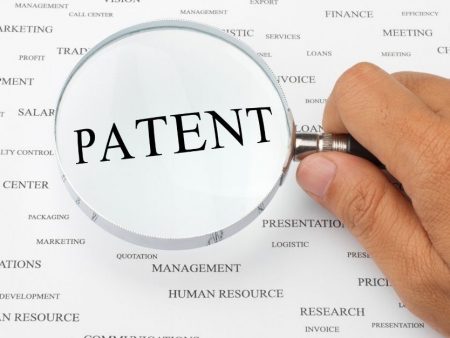
Explore Potential Monetisation opportunities

Decode real value of your diverse profolio

Only 5 business days turn-around time

Leverage our diverse industry experience

At PatentsKart, our mission is to maximize your business potential by uncovering the hidden value of your patents and identifying additional patent licensing opportunities. Before you make critical decisions on patent monetization, we provide deep insights into the true potential of your IP assets. In many cases, it may be more profitable to license a patent rather than selling or acquiring it outright.
PatentsKart’s patent infringement analysis helps identify third-party products overlapping with your strongest patents. We track potential infringers in similar technology areas and compare their products against your patent claims. By analyzing whitepapers, datasheets, standards, and technical documents, we prepare claim charts as evidence to support licensing negotiations, patent enforcement, and litigation strategy. Our service ensures protection, profitability, and peace of mind for your IP portfolio.


PatentsKart delivers detailed patent claim charts to provide strong evidence of use (EOU) in infringement cases. Our experts carefully analyze patent claims and map them against competitor products to support critical decisions on patent licensing, acquisition, or sale. With element-to-element mapping, we create clear documentation that highlights overlaps between patent claims and product features—empowering you with actionable proof for licensing negotiations, enforcement, and monetization.
Leverage our diverse industry experience
PatentsKart’s technology experts evaluate your IP portfolio to uncover patents with strong licensing potential, including underperforming assets not aligned with your core technology. Through in-depth patent portfolio analysis and technology benchmarking, we identify the most valuable patents and locate potential licensees best suited for negotiations. Our approach streamlines the process, helping you maximize patent value, reduce risks, and strengthen your IP strategy—so you can focus on growth while we handle the complexities of licensing.
At PatentsKart, we work closely with your team to design smart strategies for patent acquisitions and cross-licensing opportunities. By evaluating your business through a detailed SWOT analysis, we identify the most impactful technologies and patents to strengthen your existing portfolio strategy. Our approach ensures that every acquisition or cross-license deal enhances your competitive advantage, innovation pipeline, and long-term IP growth.


Under Section 102, a patent is rejected if the invention is already disclosed in prior art.
Under Section 103, it’s rejected if the invention is an obvious combination of existing technologies.
PatentsKart’s blocking citation analysis identifies, categorizes, and visualizes these rejections across millions of filings to show:
Which companies are blocking innovation through prior art dominance.
Which patents act as key barriers to your new filings.
Where R&D duplication or overlap is occurring in your field.
How technology clusters evolve over time through citation networks.
This data-driven understanding enables strategic foresight — letting IP and R&D teams focus resources on areas with the highest freedom to operate and the lowest risk of examiner rejection.
Understanding 102/103 citations is critical to:
Detect hidden prior art that can block future patent filings.
Identify key competitors whose patents dominate specific technology areas.
Map examiner-level insights to predict prosecution outcomes.
Support freedom-to-operate (FTO) and portfolio optimization strategies.
Uncover white-space opportunities for new, defensible inventions.
By integrating examiner-cited data with AI-driven clustering and semantic search, PatentsKart helps IP and R&D teams see beyond conventional keyword-based searches.

As a patent owner, you profit (hold the exclusive rights and ownership) from your idea by licensing a patent and collecting royalties from sales.

The invention of new products or designs is costly and carries significant risks. Through patent licensing, you can grant your intellectual property rights to another party, allowing them to handle the manufacturing, commercialization, and market risks while you benefit from royalties. This approach reduces your burden, shifts responsibility, and creates a safer path to monetizing IP without the uncertainties of direct product development.

A well-structured patent licensing agreement helps avoid costly litigation, time-consuming disputes, and unnecessary risks. With this approach, you retain full ownership of your intellectual property while granting competitors controlled access in exchange for mutual benefits, such as cross-licensing or non-assertion commitments. At PatentsKart, we analyze and structure deals that save both parties significant time, money, and legal challenges, while ensuring your IP strategy remains profitable and secure.

With patent licensing, you are not required to give up your intellectual property rights permanently. Licenses can be structured with a time limit, allowing you to grant usage rights temporarily. Once the license expires, you reclaim full ownership of the inventions or creative work, maintaining control over your IP portfolio while still benefiting from monetization and licensing agreements.

Not all inventors or entrepreneurs can manufacture or scale a product independently. Patent licensing offers a cost-effective way to bring your invention to new markets, enabling distribution across borders. By leveraging international IP licensing and strategic partnerships, startups and growing businesses can commercialize technology, expand their reach, and compete effectively in today’s highly competitive global economy.
A patent license is an agreement that allows another party to commercially use, manufacture, or sell your invention for a defined period, without transferring ownership of the patent. The patent owner grants permission in exchange for one-time payments or ongoing royalties, depending on the terms of the agreement. Licensing deals may also involve mutual obligations, such as providing technical support or sharing revenue, enabling both parties to benefit while ensuring the IP rights remain with the patent holder and supporting patent monetization strategies.
To ensure successful patent licensing, start by thoroughly researching the party interested in using your invention and establish a clear licensing agreement that protects your intellectual property rights. Additionally, seek guidance from organizations such as The United Inventors Association or other IP support networks to safeguard your invention, streamline the licensing process, and maximize the commercialization potential of your technology.
Implementing careful patent licensing best practices may seem minor, but they are critical for protecting your intellectual property rights. Following proper procedures and safeguards can help you avoid costly legal disputes, reduce litigation risks, and ensure a smooth IP commercialization and licensing process.


For inventors, licensees, patent owners, and entrepreneurs, it is crucial to carefully evaluate your patent license options. Making the wrong licensing decision can result in wasted time, lost revenue, and costly legal disputes. PatentsKart helps you navigate these choices, ensuring your IP strategy, licensing agreements, and patent monetization efforts are optimized for maximum benefit.
Before finalizing any patent licensing agreement, take precautionary steps to protect your intellectual property rights. Consult an IP attorney or patent lawyer, review terms of use and licensing policies, and stay informed by researching the latest articles, reports, and infographics. Following these best practices helps minimize risks, ensures compliance, and strengthens your overall patent monetization strategy.
Patent licensing agreements should be carefully negotiated and drafted with the guidance of an IP attorney or patent lawyer. Well-structured agreements outline upfront payments, royalty rates, and strategies to protect both licensor and licensee. They also address potential infringement risks, ensuring your IP rights are safeguarded while maximizing the value of your patent portfolio.
When negotiating a patent license, you can define the scope of rights granted. This may include licensing all patent rights or restricting them to specific areas such as manufacturing, sales, or distribution. Clearly defining the scope ensures your IP strategy remains protected, enables controlled patent commercialization, and maximizes the value of your licensing agreements.
We will Answer your Questions, Scope your Project and Ensure Quality Results
Licensing the Patent can be less profitable given that when you make your creation available in a market yourself, it's possible to increase profits significantly.
When you license your Patent, its success depends on who gets to use it.
The licensor can, in turn, be your competitor One option for those who wish to license their work is that they may cannibalize the sale of your products and earn less from royalties. Risks and Limitations of licensing your patents.

Exclusive License: Exclusive licences are a way to protect your intellectual property and prevent others from exploiting the rights. An Exclusive License means that no one but you can exploit these properties, which also includes those who would like their own license as well!
Non-exclusive License : This contract can be used to issue a patent license, and everyone participating in its creation retains custody of it. They will also get the chance to take this invention to market with them.
Sub Licenses: The principal of Patent licensing is to grant rights for making products through the process. In other words, they can award licenses on behalf of third parties with competitive edges since they may be able make it better or have access that’s otherwise not available elsewhere.
Cross-Licensing: This is the time when diverse organizations and creators may collaborate. This procedure necessitates the invention receiving backing from other products to enter the market so that they can license their patents or trademarks outright and, if necessary, give marketing aid for a limited period of time.
Compulsory License: Compulsory Patent licensing is a legal agreement that allows someone else to manufacture patented products or processes without the patent owner’s permission. Trade-Related Aspects of Intellectual Property Rights that is formed under WTO regulations.
Voluntary Licensing: Voluntary Patent licensing is an act of goodwill towards society. Patent holders/patent licenses may, at their discretion, grant to other parties on an exclusive or non-exclusive basis the right to manufacture and distribute pharmaceutical products.
There are companies with which will help you to obtain insurance against the risk of patent infringement that may help fund litigation costs and, if applicable, damages. You can also get coverage in case your company is issued by another party for infringing on Its IP.
A partially- exclusive license allows multiple companies to obtain rights to manufacture or trade a government invention but only in specific specified commercial applications or certain defined geographic locations.
There are many types of patent infringement. However, the common are listed below:
Direct Infringement: If you make, use, sell, try to sell or import something without obtaining a license from the patent holder then it is considered direct patent infringement. You can be sued for damages and an injunction that stops you from infringing further.
Indirect Infringement: Indirect infringement is when one company contributes to or induces another company to infringe on a patent. This can happen even if your company isn\’t directly infringing on the patent itself. You could be held accountable for contributing to or inducing others into infringing on patents that are owned by other companies!
Contributory Infringement: Contributory infringement is when a part that aids in creating a patented item is purchased or imported. To prove contributory infringement, a person must show that the component’s primary use would be to create a patented article. A generic item that has other benefits doesn’t qualify in proving contributory infringement.
Induced Infringement: It’s a patent law term that means someone or something is helping another person or company to infringe on a patent. This can be done through instructions, preparing instructions, and more. It appears through offering instructions, preparing instructions.
Willful Infringement: Willful infringement is a serious offense that can lead to severe penalties. If you’ve been accused of willfully infringing on someone else’s patent, it’s important to take action immediately.
Literal Infringement: Literal infringement is a legal term that refers to the direct correspondence between an infringing device or process and the patented device or process. In literal infringement, there must be a direct correspondence between the infringing device or process and the patented device or process. This means that if someone has created something similar enough to your patent, they might have infringed upon your rights.
The doctrine of Equivalents: Even if the device or method doesn’t precisely infringe a patent, a judge might find in favor of the patent owner.
Evidence of Use (EOU) Chart helps you to:
Recognize potential infringement of existing patents. If you are selling patent assets, then proof of patent infringement can strengthen the terms of the sale.
Identify vertical technology areas. An A-lots of technologies use common subsystems or techniques of getting their means. So, provisional patent and product literature studies seriously help in identifying the right target companies. We at PatentsKart, work closely with you during this significant phase to make out the number and kind of technology silos that set up the scope of your study.
Evaluate potential patent infringement analysts; work with your specialist and counsel to analyze your patent portfolio and make out the candidates that have a high potential of being an infringer.
Any unauthorized use of someone’s property without seeking their permission is known as infringement.
Two ways of approaching are:
Carrot Licensing
The person or the organization one wants to do business with is not using the patented technology or the product. Instead, the Patent owner must convince the party to use his product and how carrot licensing the product or technology be beneficial for them.
Stick Licensing
If any person or organization uses the patented design, technology, or product and thus, has infringed the Patent. The owner can file a suit against the infringer or settle with the infringer agreeing to license his Patent.
Evidence of Use (EOU) chart defines the extent to which a claim ‘reads onto’ a product, procedure, and or standard. Detailed evidence of use charts helps in licensing agreements, pre-litigation research, and patent transaction opportunities.
If the licensee cannot produce the needed demand and the price is not affordable by many people. In this situation, without the patent owner\’s permission, the government can issue’ Compulsory Licensing.
In this, a patent holder’s intellectual property rights as patent are granted subject to a compulsory license, and the government uses rights against payment either set by law or determined through some form of adjudication or arbitration.
This involves giving licenses to more than one entity. It means that one licensee may exploit the invention, but along with him, others who have been permitted the same Patent may be eligible for equal exploitation. The licensor also remains to exploit the same intellectual property.
A partially- exclusive license allows multiple companies to obtain rights to manufacture or trade a government invention but only in specific specified commercial applications or certain defined geographic locations.
Yes, In the exclusive license, even the licensor is also excluded from exploiting the intellectual property rights and cannot trade the goods in the territory where the licensee has acquired an exclusive license. Therefore, in this, the risk of infringement is less as it is less exploited, and the licensee will have a monopoly over the market, so the cost of the product will be higher than the usual price, and the revenue or royalty will also be higher. The licensor will also receive a higher royalty payment from the license.
A Co-exclusive license that takes a middle-ground between exclusive and non-exclusive. It is one in which the licensor grants a license to more than one licensee but agrees that it will only grant licenses to a limited group of other licensees. The group of licensees may be identified by name, description (a license will only be granted to licensees who meet specific criteria), or only by number.
United States-13521, 58th St. SE Snohomish, WA – 98290, USA
INDIA - PatentsKart B1, Netsmartz House, IT Park, Chandigarh - 160101
Copyright © 2024 Patentskart. All rights reserved